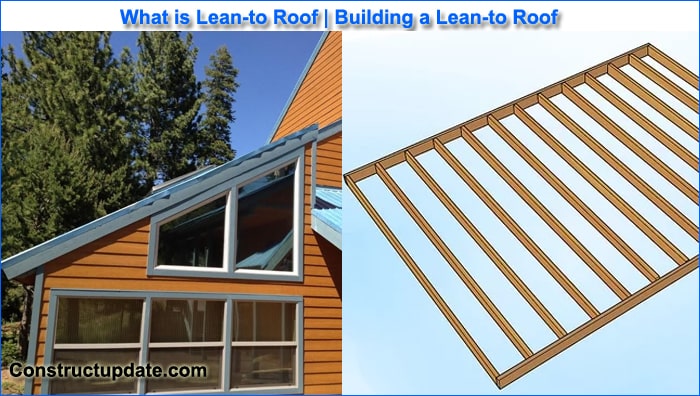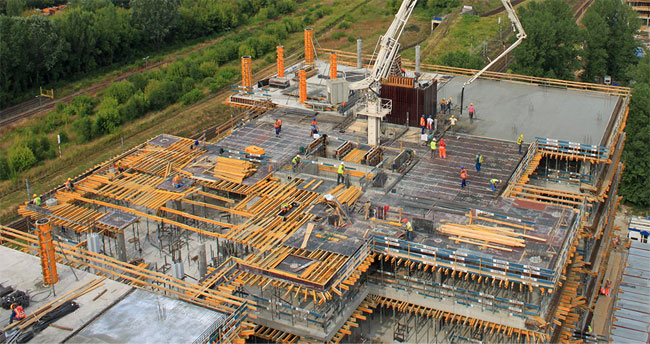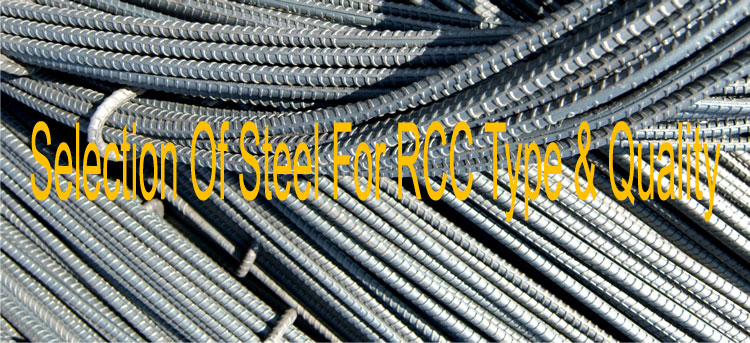What is Lean-to Roof | How to Construction a Lean-to Roof
If you are intending to construct a new home, it is crucial that you choose the best roof for the building because the roof is one of the most crucial components that shields the building from the elements, including rain, sunlight, and harsh weather.
One of the best and most popular roofs for construction is the lean-to roof. Comparing the lean-to roof to other types of roofs, it is far simpler to build and more affordable.
The lean-to roof structure, its benefits and drawbacks, as well as how to create one, will all be covered in this article.
What is a Lean-to Roof?
Typically, a building with a lean-to roof is one whose rafters or roof lean against another structure or wall. It is a straightforward addition to an existing structure that has the upper edge of the rafters leaning on the wall.
The lean-to roof may stand alone as a separate building. It is essentially a sloped roof structure that is more frequently built leaning against neighbouring walls or structures. The simplest type of pitched roofs can be categorised as the lean-to roof. The most typical type of roof used in homes is what is sometimes referred to as a sloping roof.

In terms of pitched roof types, the lean-to roof is a single roof type. The pent roof or aisle roof are other names for it. Skillion Roof is another name for Lean-to Roof. Due to the one flat roof’s severe slope, it can be compared to a shed roof. The shed roof has just one slope, whose steepness can change.
In these kinds of roofs, one wall is constructed appropriately higher than the other wall to provide the roof with the required slope. Usually, the roof’s upper edge is attached to the building or other structure.
Previously, this sort of roof was mainly used to construct sheds, but it is now a highly common roof option for structures with contemporary architectural styles. One of the extremely clean ways to add a new area to an existing structure is using a lean-to roof. They are also a well-liked option for creating a carport and adding shade and screening to a porch or verandah.
How do I Construct a Lean-to Roof?
One style of shed roof is the lean-to roof truss design. Given a slope in one direction, lean toward the shed roof. Which rafter end is situated on the tall portion of the current building’s wall? Above the external support post, the lower end is supported. Alternatively, have an overhang on the exterior wall. a single-pitch roof For a large increase in the shed roof, shed blueprints are used.
Let’s look at some possibilities for building a lean-to roof step by step.
- Create a lean-to roof design that meets your needs and preferences first.
- Now, drill a hole of 9″ to a depth of 2 feet as necessary at a distance of 4 feet to support the post. This is in accordance with the lean-to-truss design.
- After that, put the post through that opening. And pour concrete over the hole.
- Now, proceed with each post according to your previously mentioned lean-to roof plan.
- Cut a notch now for a supporting post at the top of your postings. This will be supported by an upright post. Next, insert each support post into a notch.
- Now drill a quality screw onto your existing wall using a nail screwdriver. in order for it to attach to the top of your rafters.
- When the entire structure is ready, drive in the metal purlins from the outside. Nails are used to fix each metal purlin.
- To create sturdy joints at the top of the building, attach two planks to each end. The middle plank should then be added. Now use a nail gun to fasten the nail.
- Now, correctly install the rafters in accordance with your plan. The plan rafter should be positioned at the proper distance.
- From the top of the rafter to the bottom of the rafter, calculate the roof’s slope.
- When all of the rafters are securely fastened, cover the roof with a suitable roofing material according to your needs.
- Lean-to roofs can be built with materials like AC sheets, pre-coated sheets, Mangalore tiles, etc.
The Materials That Go Into Building a Lean-to Roof
The lean-to roof can be built using a variety of materials that are readily available on the market. The following are some examples of frequently used roofing materials:
- Clay Roof Tiles
The baking-molded clay used to make the clay roof tiles comes in a variety of colours, including white, orange, and brown, among others. Compared to other varieties of roof tiles, these clay tiles are more durable.
- Glass Roofing
One of the best roofing materials for letting natural light into the building is glass roofing. Additionally, the structure’s aesthetic appeal is improved by this. However, the glass roof is challenging to move and there’s a danger it could break.
- Polycarbonate Roof
Polycarbonate sheets are incredibly light and simple to move from one location to another. The impact resistance of polycarbonate is good. Due to its great degree of flexibility, polycarbonate may be moulded into a variety of shapes to suit the needs of the structure.
- Concrete Tiles
In comparison to other types of tiles, concrete tiles are quite inexpensive. It is strong and long-lasting.
- Asphalt Shingles
One of the first roofing materials utilised in the building was asphalt shingles. The asphalt shingles are effectively fire-resistant.
- Metal Roofing
Metal roofing is available in a wide range of colours and is versatile in its form and style. It also needs very little maintenance.
Advantages of Lean To Roof
Prevents Water/Snow Pooling:
Lean-to roof structure can provide the greatest slope for water and ice drainage. which slides as a result of the roof’s slope. which is an appropriate choice for the final roof design.
Cost-Effectiveness:
Due to its simplicity in construction, it is economical. Essentially, it has a single slope design. This requires less time for contractors to construct. As a result, the total cost of the construction is reduced.
Lean to roof designs are appropriate for a home addition and are good for shed roofs. Lean-to roofs are appropriate for shadow architecture. Since its design has a very neat, quick, and normal appearance. Leaning a roof over an already-existing deck is a good alternative. It reaches the deck railing from the roof fascia.
Lean-to roofs can be utilised for the installation of solar panels or skylights because they have a little incline.





